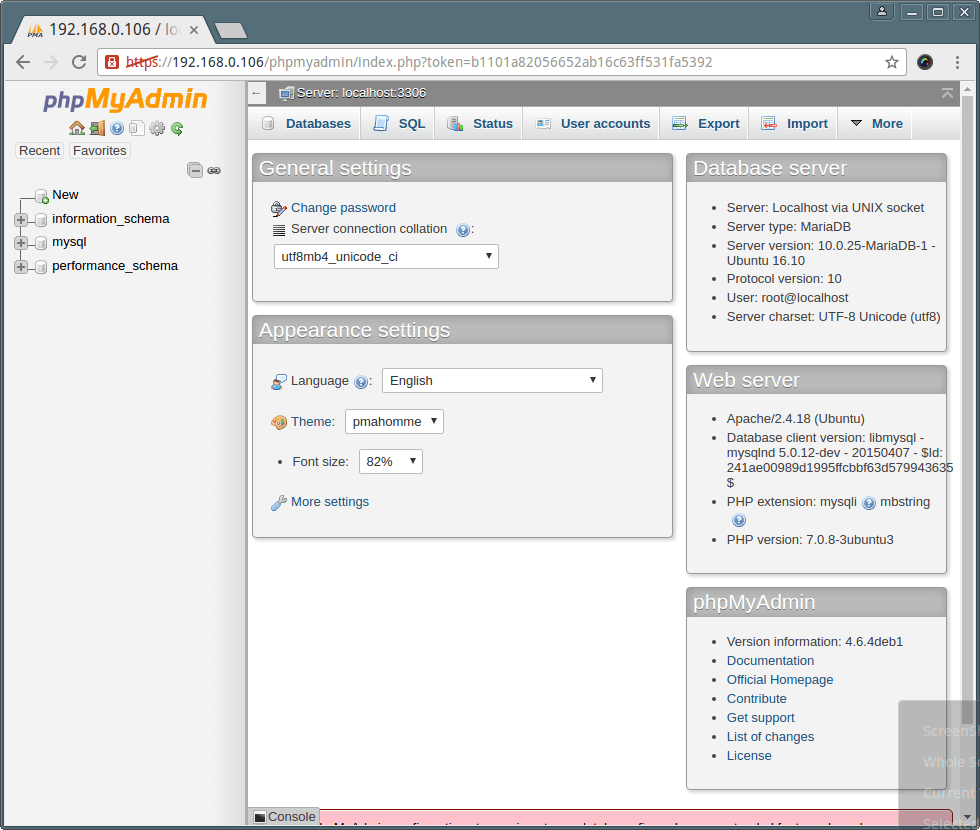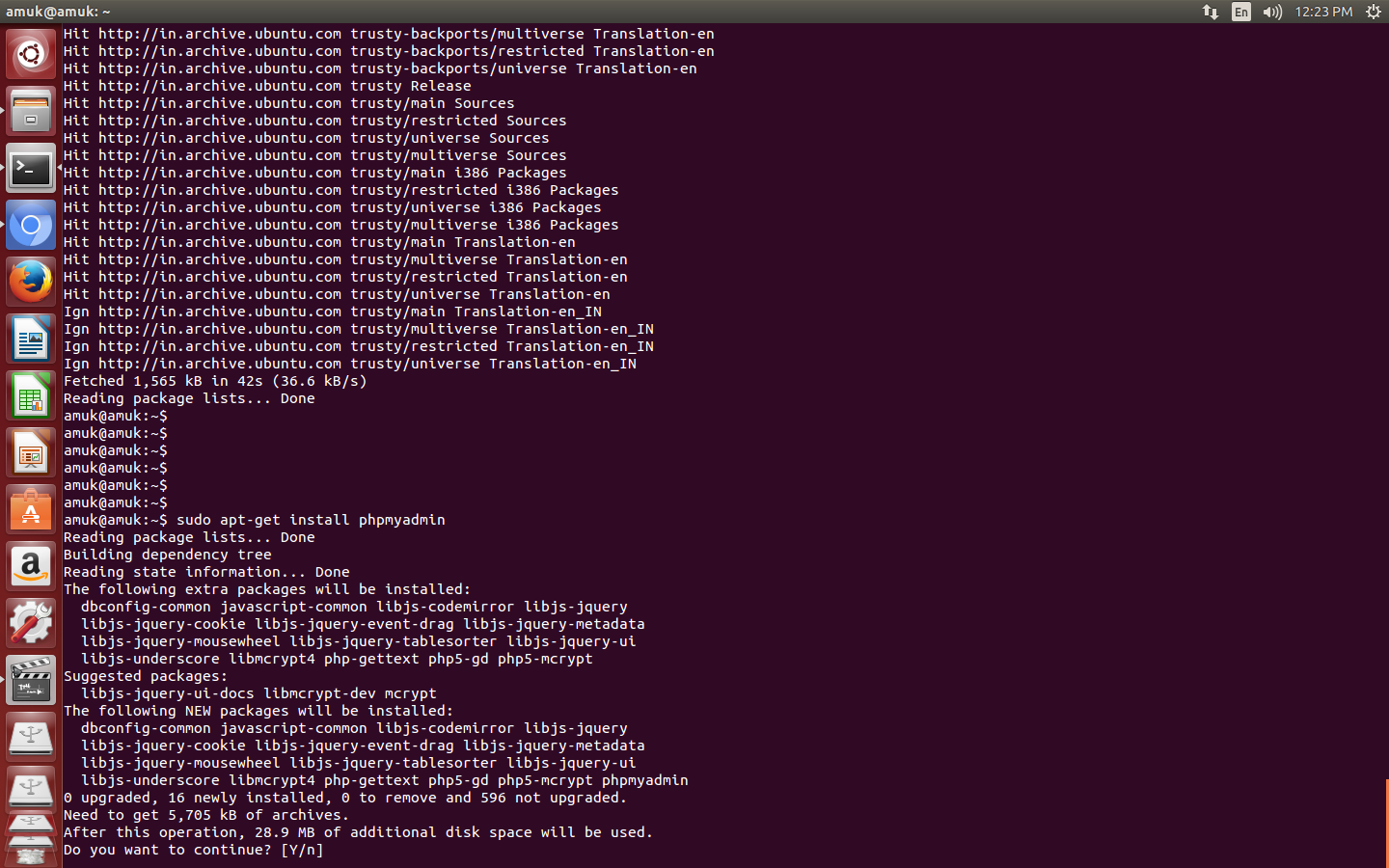
- #RESTART PHPMYADMIN UBUNTU INSTALL#
- #RESTART PHPMYADMIN UBUNTU WINDOWS 10#
- #RESTART PHPMYADMIN UBUNTU PASSWORD#
- #RESTART PHPMYADMIN UBUNTU DOWNLOAD#
Type '\c' to clear the current input statement. To verify and validate that MariaDB is installed and working, log in to the database console using the commands below: sudo mysql -u root -p
#RESTART PHPMYADMIN UBUNTU PASSWORD#

Next, run the commands below to secure the database server with a root password if you were not prompted to do so during the installation.
#RESTART PHPMYADMIN UBUNTU INSTALL#
To install MariaDB, run the commands below: sudo apt-get install mariadb-server mariadb-clientĪfter installing MariaDB, the commands below can be used to stop, start and restart MariaDB services.

It is fast, secure and the default server for almost all Linux. MariaDB is a truly open-source database server you can run with your projects. You should get a test page if every works. To validate that Apache is installed and functioning, open your web browser and browse to the server’s hostname or IP address. To install Apache on Ubuntu, run the commands below:Īfter installing Apache2, the commands below can be used to stop, start and restart Apache2 services. Install Apache HTTP ServerĪpache is the most popular open-source web server powering the majority of websites online. Since we’re going to be running phpMyAdmin with Apache web server, continue below to install it.
#RESTART PHPMYADMIN UBUNTU WINDOWS 10#
Now that Windows 10 WSL environment is ready, continue below to install Apache, MariaDB, and PHP and configure phpMyAdmin to run. wsl -set-default-version 1īcdedit /set hypervisorlaunchtype auto start These run below and try to launch the Ubuntu image again. Some troubleshooting commands to run when you run into the issues above. To see these additional updates run: apt list -upgradable Memory usage: 26% IPv4 address for eth0: 10.0.2.15 Usage of /home: unknown Users logged in: 0 System information as of Mon Apr 12 17:57: To run a command as administrator (user "root"), use "sudo ".

The username does not need to match your Windows username. Please create a default UNIX user account. After installing Ubuntu, you’ll want the option to launch Ubuntu from the Windows WSL environment.Īfter launching Ubuntu, it should install and prompt you to create your account. Ubuntu 20.04 LTS on Windows allows you to use Ubuntu Terminal and run Ubuntu command line utilities including bash, ssh, git, apt, and many more.Ĭlick the Get button and install.
#RESTART PHPMYADMIN UBUNTU DOWNLOAD#
Now that WSL 2 is installed and ready to be used, open the link below to download and install a copy of Ubuntu 20.04 from the Windows store. wsl -set-default-version 2 Install Ubuntu on Windows 10 Then run the commands below to configure WSL 2 as the default version of WSL. If you don’t restart, the below command might not be recognized.Īfter restarting your computer, login back in and launch PowerShell as administrator. When you’re done running the commands above, restart your computer for all the configuration changes to apply. If you’re using Windows 10 version lower than 2004, then use the commands below: Enable-WindowsOptionalFeature -Online -FeatureName VirtualMachinePlatform -NoRestart dism.exe /online /enable-feature /featurename:VirtualMachinePlatform /all /norestart To enable the VM platform feature in Windows, run the commands below from the same PowerShell administrator’s console.

WSL 2 requires Windows 10 Virtual Machine Platform to be enabled. When the console opens, run the commands below: dism.exe /online /enable-feature /featurename:Microsoft-Windows-Subsystem-Linux /all /norestartĪfter installing, you should get a success message similar to the lines below: Deployment Image Servicing and Management tool


 0 kommentar(er)
0 kommentar(er)
